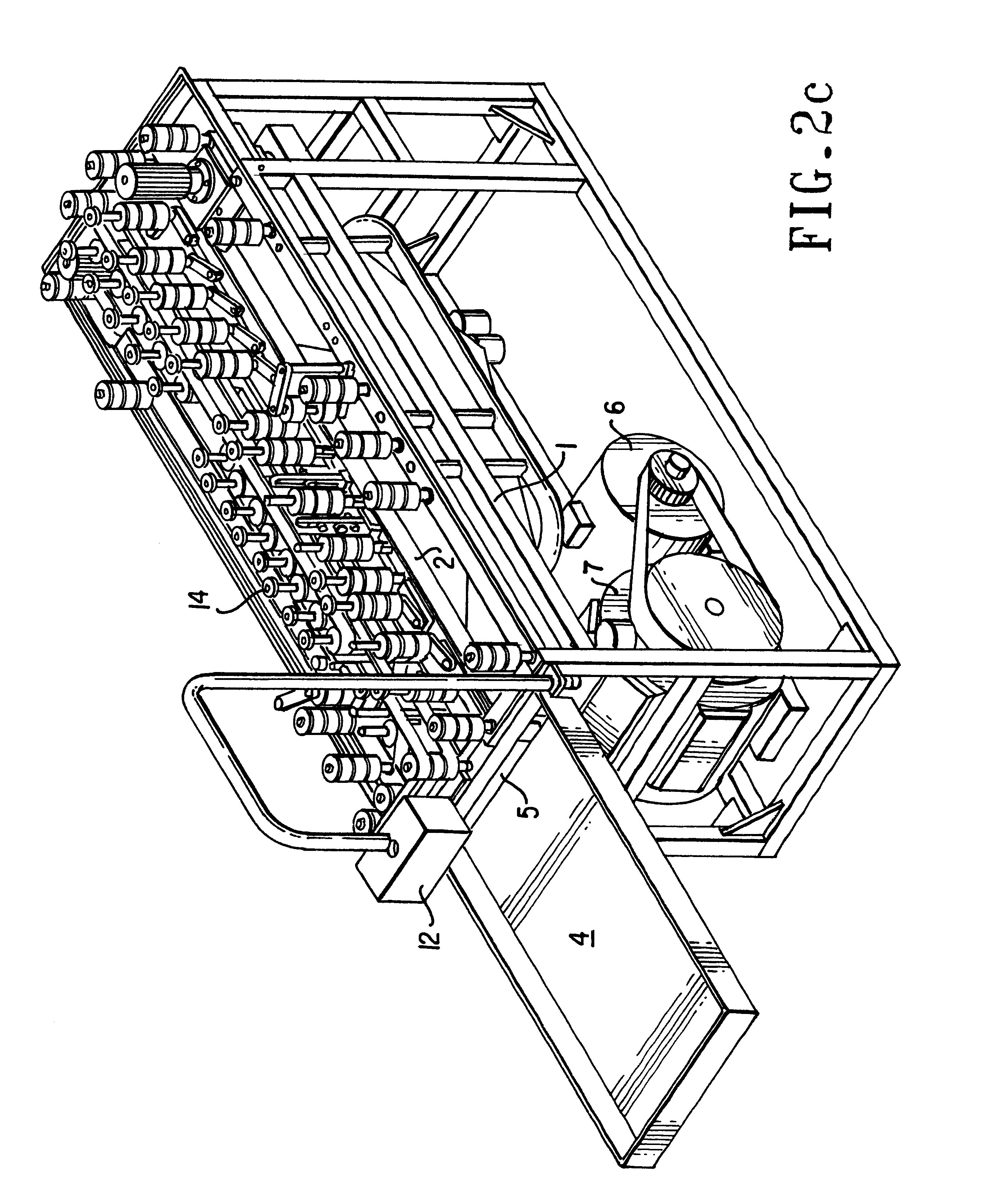Method for scaling fresh fish and removing its internal organs and device for implementation of the offered method
- Summary
- Abstract
- Description
- Claims
- Application Information
AI Technical Summary
Benefits of technology
Problems solved by technology
Method used
Image
Examples
Embodiment Construction
)
The proposed device comprises (FIG. 3): stand 1 on which band conveyer 2 with drive 3 are mounted, receiving tray 4 with basing foundation of conveyer 5, drive of pump 6, high pressure pump 7 for creating water jets through nozzles 8, system of guard 9, system of drain and removal of waste materials 10, device 11 for cutting the belly and entrails removal, control system 12, elastic elements 13 for bringing together distance-type rollers 14. The machine operates in the following way: the fish is manually (or from an automatic loader) supplied one by one, vertically, with the belly being downwards and head forward, to receiving tray 4 of band conveyer 2 driven by drive 3. The lower surface of the fish body touches basing foundation 5. High-pressure pump 7 with drive 6 provides for 14-16 bar-pressure to supply water through nozzles 8 mounted in various areas of treatment. Casing 9 provides for reliable protection from splashing and system of drain 10 allows removing waste materials. ...
PUM
 Login to View More
Login to View More Abstract
Description
Claims
Application Information
 Login to View More
Login to View More - R&D
- Intellectual Property
- Life Sciences
- Materials
- Tech Scout
- Unparalleled Data Quality
- Higher Quality Content
- 60% Fewer Hallucinations
Browse by: Latest US Patents, China's latest patents, Technical Efficacy Thesaurus, Application Domain, Technology Topic, Popular Technical Reports.
© 2025 PatSnap. All rights reserved.Legal|Privacy policy|Modern Slavery Act Transparency Statement|Sitemap|About US| Contact US: help@patsnap.com



